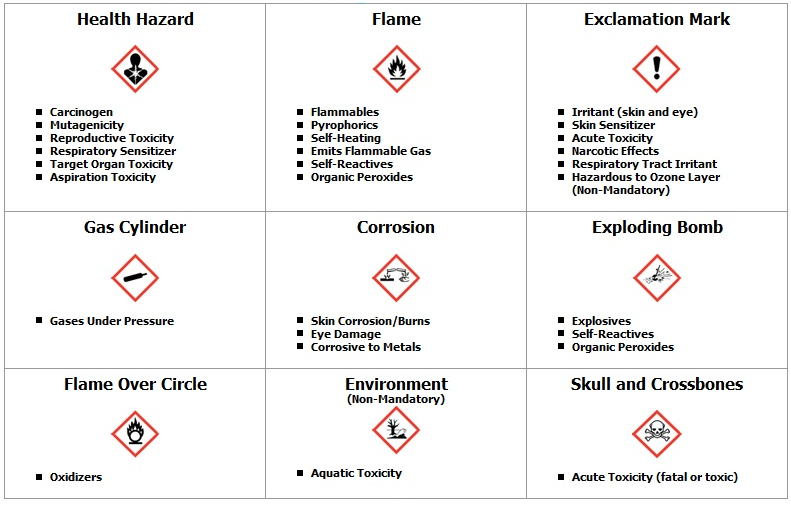What Does A Pictogram With An Exclamation Point Mean
Olivia Luz

Acute toxicity which may be fatal or cause organ damage from a single short term exposure.
Acute toxicity oral dermal inhalation category 4 skin corrosion irritation skin irritation category 2 serious eye damage eye irritation eye irritation category 2 and 2a respiratory or skin sensitization skin sensitizer category 1 1a and 1b. Description of global harmonization pictograms. A pictogram using the exclamation mark symbol is presented in figure c 2 for the purpose of illustration. Each pictogram covers a specific type of hazard and is designed to be immediately recognizable to anyone handling hazardous material.
Ghs pictograms identify the hazards associated with chemicals and warn users of the types of precautions that should be taken to minimize adverse effects that could result from exposure. Exclamation mark can denote the following hazards and hazard categories. Acute toxicity 4 oral dermal and inhalative. The exclamation mark could be considered the most general purpose pictogram under the new ghs ruling.
For classification the exclamation mark overlaps some of the other marks though they can not be used together the ghs classification manual can help you determine when to properly use the exclamation mark. The exclamation mark pictogram is also used to denote hazardous to the ozone layer. Skin sensitizer which is an allergic response following skin contact. Irritant skin and eye skin sensitizer acute toxicity narcotic effects respiratory tract irritant hazardous to ozone layer non mandatory.
RELATED ARTICLE :
The ghs recognizes nine hazard pictograms. The red frame around the white diamond contains a large black exclamation point in the center. It is used on a chemical label for substances that represent the following hazards. In addition to pictograms labels are required to include a signal word danger or warning a brief hazard statement and a precautionary statement outlining ways to prevent exposure.Source : pinterest.com

















